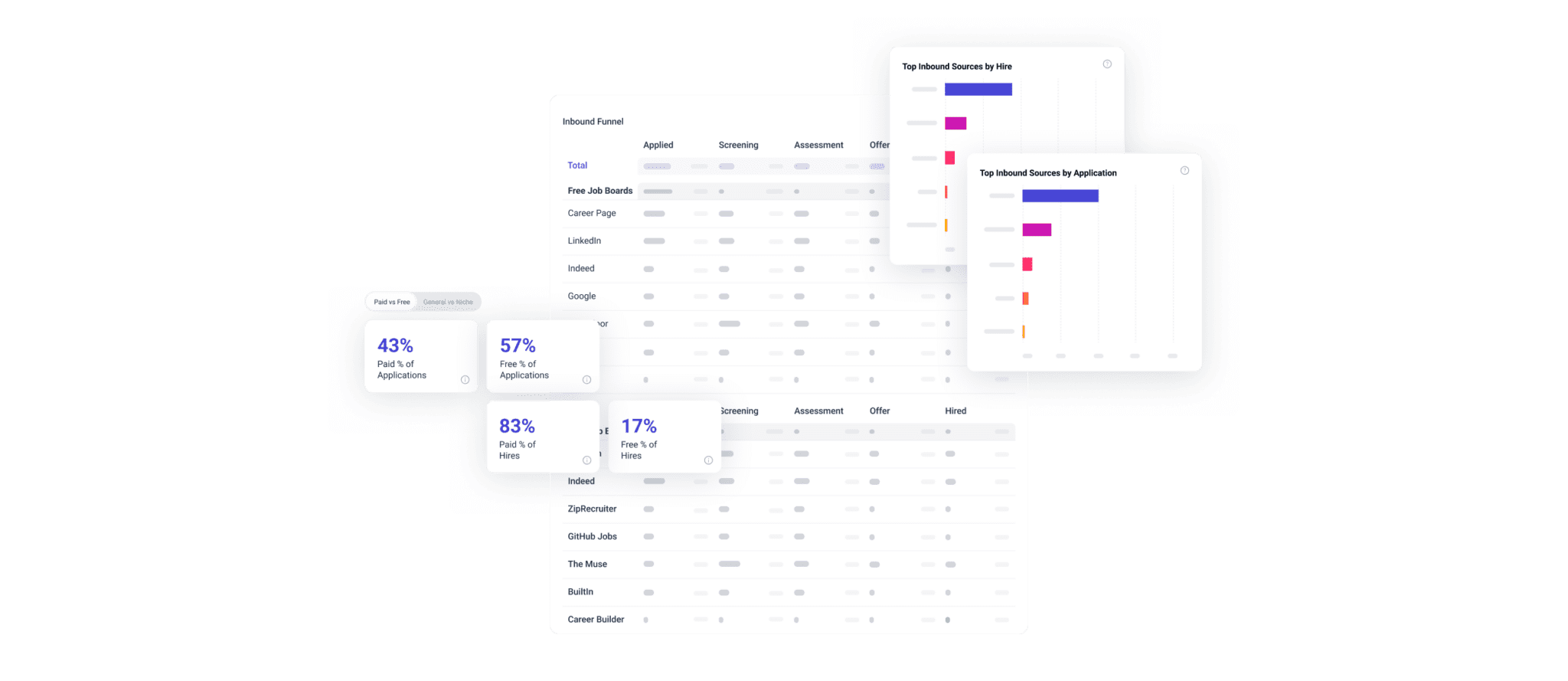Today, I’m beyond excited (ecstatic, really) to announce that we’ve raised $8 million from incredible investors including Uncork Capital, First Round Capital, and NextView Ventures, who share our belief that equity in recruiting is only possible through better data and analytics.
Where we started
It’s been nearly six years since Amit, Maryam, and I started Datapeople (previously TapRecruit), and never has our mission to make recruiting fair for every candidate and efficient for every hiring team felt more urgent. We know that good intentions don’t always translate to good for candidates, which is why we’re building the first comprehensive recruiting analytics platform to help hiring teams make more thoughtful and inclusive decisions.
For me, the problem of equity and inclusion has always been personal. I am gay, born into a conservative family suffering the relentless undertow of untreated mental illness, income insecurity, and substance abuse. Generation after generation, these traumas have haunted my family, robbing us of opportunity and long-term thinking. Investments in our future are still continually traded for the daily needs of survival.
My story is neither unique nor isolated. Too many people know what life is like with weights tied to them, forcing them to swim harder but somehow never break the surface. They know all too well what it’s like “not to have the right experience” or “not to be a great culture fit” because hiring systems aren’t designed to accurately evaluate outliers. With a lot of luck and support, I was able to combat some of my own personal undertows. I’m reminded constantly of just how small the odds were that I’d get to be here, making a funding announcement, building Datapeople.
In a lot of ways, recruiting is woefully underserved compared to its revenue-center peers in sales and marketing. There is some data, but no analytics. There are instincts, but spotty research to support them. And if you look closely enough, recruiting is also where the undertow is most visible. Candidates without like-minded networks are excluded from companies that love referrals. Sourcing simultaneously ignores candidates not lucky enough to start their careers in big tech or at name-brand firms and tokenizes candidates to fill diversity interview quotas. Job requirements like multiple internships for entry-level roles automatically exclude candidates too poor to complete them.
But recruiting is also an industry brimming with people who want to make a difference, who want to help qualified candidates, regardless of their background, land a great job. We built the first recruiting analytics platform to serve both well-intentioned hiring teams and the candidates that enter their hiring processes. We believe that the only way we’re going to meaningfully address the opportunity and visibility gaps so many candidates face is by giving hiring teams the data they need to make more thoughtful and accurate decisions about their hiring processes.
From language analytics to recruiting analytics
Equity in recruiting begins with organic candidates: people who find your job post using a job search engine or a career site. To apply, they need the basics: a resume and an internet connection. And while the obstacles of getting a job are many and the undertow is relentless, candidates have a 0% chance of receiving an interview for a job they don’t apply to.
This was the foundation of our first language analytics product for job posts. What started as a simple question —“why do some jobs perform better than others?”— quickly turned into a complex series of annotations, linguistics, and natural language processing. Small changes to job titles, responsibilities, and even perks have a meaningful impact on who feels welcome to apply.
Once we started dissecting and organizing job content, it was impossible to ignore recruiting performance data. We needed to continually show that our language analytics worked and that the quality and diversity improvements our customers were seeing weren’t a coincidence. When we started asking rudimentary questions like “how many candidates applied?” and “how many were qualified enough to receive a phone interview?” we were surprised at how challenging they were to answer accurately. Sure, you could run a blended calculation of your jobs, but comparing the performance of a single requisition that made 10 hires over 12 months to one that only made 1 hire in 2 months wouldn’t teach you anything useful. More complex questions like “are women being treated fairly in the interview process?” or “how representative was the initial candidate pool?” were even harder to answer because of how incomplete the data was.
Analytics isn’t a visualization problem: pretty charts with bad data tell lies. At the heart of recruiting are thousands of small decisions, each made to improve the efficiency and fairness of the process. Datapeople’s recruiting analytics platform exists to help make each one of those decisions more accurate and empathetic by organizing and augmenting the data you collect in your ATS. Sure, we have lots of pretty charts, but behind our platform are rigorous data cleanup services and annotation libraries that not only make it easy to ask questions about your recruiting process but also help you more accurately interpret the answers.
True equity will take time and, frankly, better data, but even so early into our mission, there are real signs of progress. Just last month we validated that since Square began using Datapeople they are now seeing 45% more qualified candidates and 25% more female candidates enter their recruiting process. BuzzFeed has 100% more qualified female candidates apply for their engineering roles. Already this year, companies in more than 70 countries used our language analytics products to write job posts that more accurately described their roles to candidates in their local markets. We’ve yet to find an industry or market that doesn’t benefit from better decision-making in their recruiting process and are so grateful that we get to work with so many talented teams from across the globe.
It also cannot go without saying how grateful I am for everyone on the Datapeople team. It is only through their creativity and dedication that we’re here today, collaborating with so many amazing customers to chip away at such an important problem. A huge thank you to each and every Dataperson.
What’s next
It takes courage for investment teams to look past the undertow and bring real curiosity to an early-stage bootstrapped business. It’s even harder to find a group of investors willing to put so much conviction behind a team trying to tackle equity in hiring. The $8 million provided by Uncork Capital, First Round Capital, and NextView Ventures will enable us to ask even more challenging questions about how better data can make the hiring process equitable for more candidates. The simple truth is that hiring is a complex business, and we’ve really only begun to challenge some of its most basic assumptions.
Join us
For hiring teams interested in exploring Datapeople’s recruiting analytics platform, we’d love to talk to you. You can register for a free trial of our products or request a demo. For candidates who want to be part of our mission, check out our current job openings.






